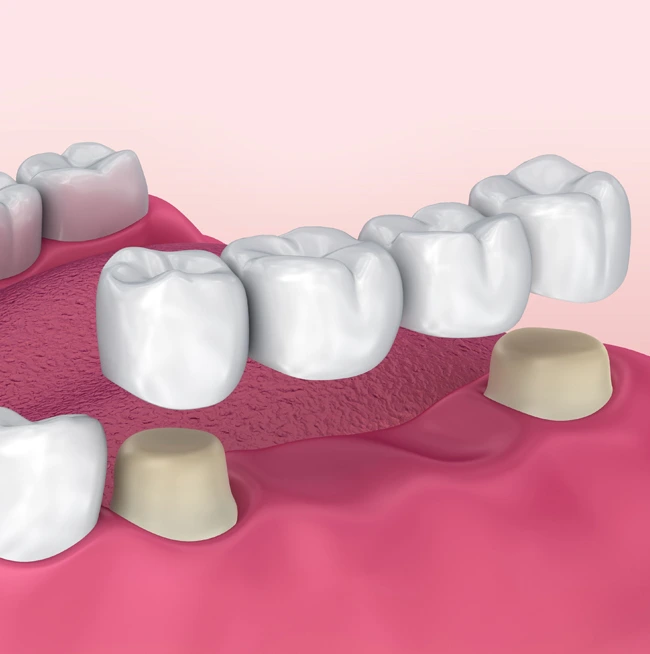
Replacing Teeth: Key to a Healthier, Fuller Smile
Tooth loss is a common challenge despite our best efforts to maintain good dental health. Fortunately, modern dentistry offers a variety of innovative solutions tailored to meet your specific needs.
Replacing a missing tooth is about more than just enhancing your appearance. When a tooth is lost, the surrounding teeth can shift out of position, making it harder to bite, chew, and speak. Over time, this misalignment can lead to changes in your facial structure, potentially affecting your overall appearance.
Addressing tooth loss promptly is crucial for maintaining long-term oral health. Beyond the visible gap, missing teeth can disrupt the alignment of your smile, leading to further dental issues and changes in facial aesthetics. By replacing missing or damaged teeth, you not only restore your smile but also protect your oral health for the future.
What Is a Dental Bridge?
Traditional Bridge
Cantilever Bridge
Maryland Bridge
Dental Bridge Procedure: What to Expect
Getting a dental bridge is more involved than a typical checkup. If you've had a dental crown before, the process will be quite similar, but it requires multiple appointments to prepare your teeth and place the bridge. Any necessary treatments for the supporting teeth, such as fillings or root canals, should be completed before starting the bridge procedure.
Once the supporting teeth are ready, the dentist will remove some enamel to create space for the abutment crowns. A mold of the area will be taken and sent to a lab to craft your personalized bridge, which typically takes a few weeks. During this time, you'll wear a temporary bridge.
At your final appointment, the dentist will place the permanent bridge and make any necessary adjustments for the perfect fit.
With proper care, a dental bridge can last more than 10 years. To maximize its lifespan, brush your teeth twice daily, floss at least once a day, clean underneath the pontic, and visit your dentist for regular check-ups and cleanings.



